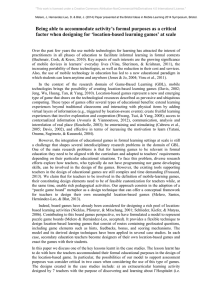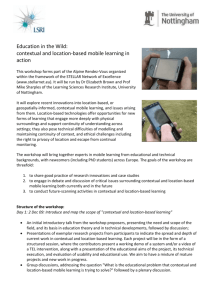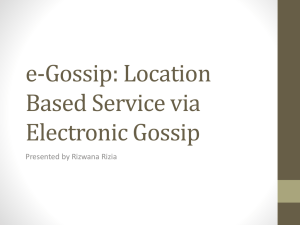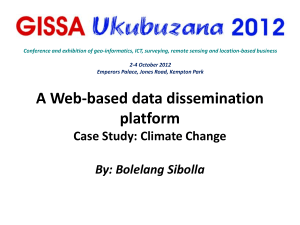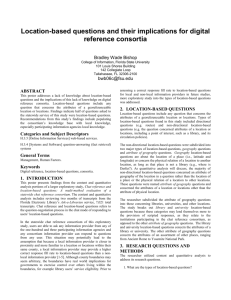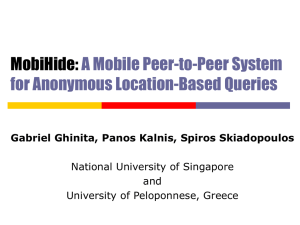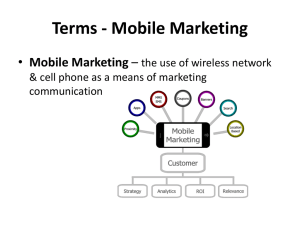Extend Your Journey Considering Signal Strength and Fluctuation in
advertisement
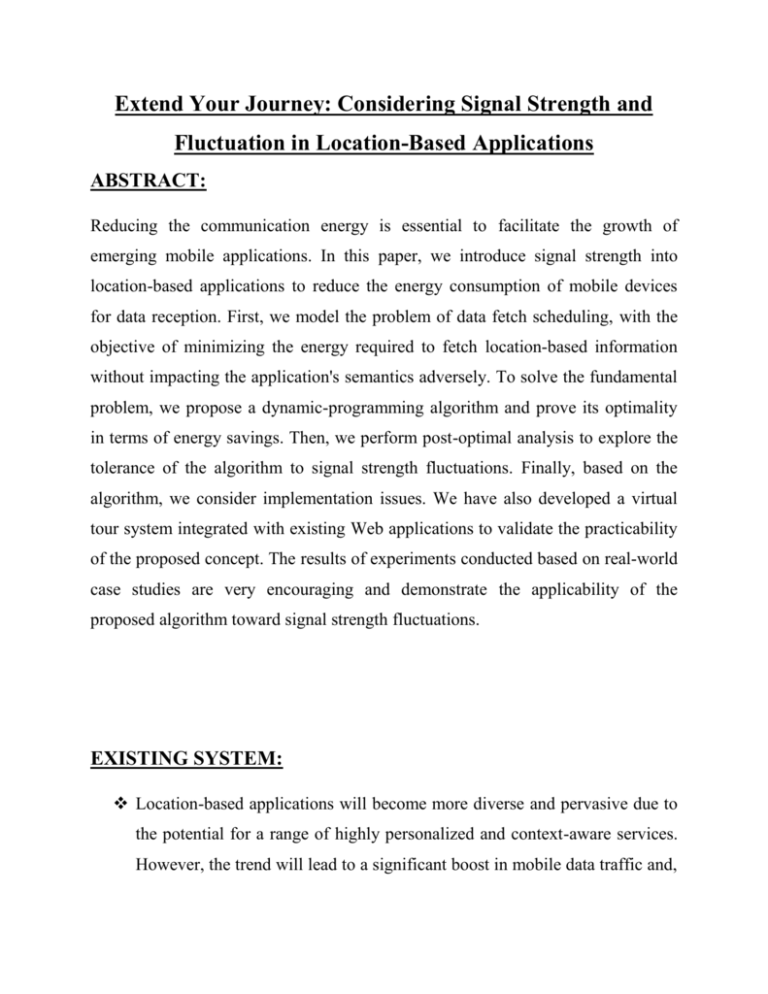
Extend Your Journey: Considering Signal Strength and Fluctuation in Location-Based Applications ABSTRACT: Reducing the communication energy is essential to facilitate the growth of emerging mobile applications. In this paper, we introduce signal strength into location-based applications to reduce the energy consumption of mobile devices for data reception. First, we model the problem of data fetch scheduling, with the objective of minimizing the energy required to fetch location-based information without impacting the application's semantics adversely. To solve the fundamental problem, we propose a dynamic-programming algorithm and prove its optimality in terms of energy savings. Then, we perform post-optimal analysis to explore the tolerance of the algorithm to signal strength fluctuations. Finally, based on the algorithm, we consider implementation issues. We have also developed a virtual tour system integrated with existing Web applications to validate the practicability of the proposed concept. The results of experiments conducted based on real-world case studies are very encouraging and demonstrate the applicability of the proposed algorithm toward signal strength fluctuations. EXISTING SYSTEM: Location-based applications will become more diverse and pervasive due to the potential for a range of highly personalized and context-aware services. However, the trend will lead to a significant boost in mobile data traffic and, consequently, result in further pressure on the limited battery capacity of mobile devices. Thus, reducing the communication energy is an imminent challenge in stimulating the development of emerging location-based applications. Many existing approaches leverage the complementary characteristics of Wi-Fi and 3G—i.e., WiFi to improve energy efficiency, and 3G to maintain ubiquitous connectivity. Recently, it has been observed that signal strength has a direct impact on the communication energy consumption. The communication energy per bit when the signal is weak could be as much as six times more than that when the signal is strong. This phenomenon has proved evident in both Wi-Fi and 3G. The reason for such a phenomenon results mainly from the adaptive modulation and power control employed in wireless network systems. Based on the observation, it could be promising to exploit signal strength information to reduce the communication energy of mobile devices. However, the challenge is how to exploit this observation to gain energy efficiency. In particular, signal strength may fluctuate with time due to multipath fading, so attention has to be paid to the impact of signal fluctuations on the practicability of the proposed approaches in real-world environments. DISADVANTAGES OF EXISTING SYSTEM: The significant boost in mobile data traffic and, consequently, result in further pressure on the limited battery capacity of mobile devices. The communication energy per bit when the signal is weak could be as much as six times more than that when the signal is strong. This phenomenon has proved evident in both Wi-Fi and 3G. The reason for such a phenomenon results mainly from the adaptive modulation and power control employed in wireless network systems. Based on the observation, it could be promising to exploit signal strength information to reduce the communication energy of mobile devices. However, the challenge is how to exploit this observation to gain energy efficiency. In particular, signal strength may fluctuate with time due to multipath fading, so attention has to be paid to the impact of signal fluctuations on the practicability of the proposed approaches in real-world environments. PROPOSED SYSTEM: In this paper, our major contribution is to introduce signal strength into location-based applications to reduce the energy consumption of mobile devices for data reception. To validate the practicability of the concept, we developed a virtual tour system comprised of an online server and a mobile application program based on Android. First, we model the fundamental problem in the virtual tour system as a data fetch scheduling problem. Second, we propose a dynamic-programming algorithm to solve the fundamental problem. The solution involves scheduling the fetching of location-based information at appropriate locations so as to minimize the total energy consumption. We prove that the algorithm is optimal in terms of energy savings. Third, we perform post optimal analysis to explore how the algorithm responds to signal strength fluctuations, especially the fluctuation range within which the derived solution remains optimal or feasible. The analysis helps to understand the impact of signal fluctuations on the practicability of this new concept in real-world environments. Fourth, we discuss technical implementation issues that arise when introducing signal strength into location-based applications for energy savings. Fifth, we conducted a series of experiments in Taipei City, Taiwan, for realworld case studies. The results show that an Android smartphone of HTC EVO 3D can achieve a significant energy reduction when accessing location-based applications. Finally, we discuss the limitations of our work and highlight issues that require further investigation. The concept, once proved practicable and embraced gradually, could be extended and applied to other variants of location-based applications based on the knowledge learned from this work. ADVANTAGES OF PROPOSED SYSTEM: Exploitation signal strength information has been done to reduce the communication energy of mobile devices. A feasible fetch schedule that minimizes the total energy consumption for data reception Through real-world case studies, we have demonstrated the practicability of introducing signal strength into location-based applications. YSTEM ARCHITECTURE: SYSTEM SPECIFICATION Hardware Requirements: • System : Pentium IV 3.5 GHz. • Hard Disk : 40 GB. • Monitor : 14’ Colour Monitor. • Mouse : Optical Mouse. • Ram : 1 GB. Software Requirements: • Operating system : Windows XP or Windows 7, Windows 8. • Coding Language : Android,J2EE(Jsp,Servlet,Java Bean) • Data Base : My Sql / MS Access. • Documentation : MS Office • IDE • Development Kit : Eclipse Juno : JDK 1.6
